LAB REPORT
Science and Technology Making Headlines
July 15, 2020

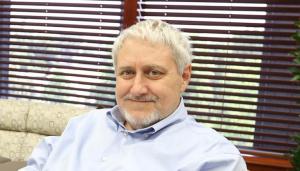
Bill Goldstein announced this week that he will retire as director of Lawrence Livermore National Laboratory following the selection of his successor.
Heading toward retirement
After a little more than six years at the helm, Bill Goldstein announced Tuesday that he will be retiring as the director of the Lawrence Livermore National Laboratory (LLNL) and as president of Lawrence Livermore National Security (LLNS), effective once a successor is named.
An experienced physicist who will be stepping down after spending 36 years at the Lab in various capacities, Goldstein is the 12th director of LLNL since it was founded by the University of California in 1952 and the third president of LLNS.
"It is an immense honor to serve as director of this unique, exceptional institution," Goldstein said. "I have been privileged throughout my career to work alongside great scientists, engineers, technicians and administrators who have devoted their estimable talents to our critical missions. The Lab has demonstrated again and again its ability to contribute to solving the biggest problems, and I am confident it will continue to serve the nation with new ideas."

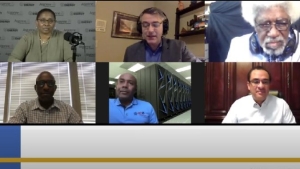
Tony Baylis (bottom row, center), LLNL’s director of the Office of Strategic Diversity and Inclusion, participated in a podcast talking about the room for more diversity in the HPC industry.
HPC has room for greater diversity
Promoting greater diversity in HPC is a much-discussed effort and ostensibly a long-sought goal in HPC. Yet it seems clear HPC is far from achieving this goal. Recent U.S. events have again stirred unrest and discomfort forcing the U.S. to face entrenched, explicit and implicit racism.
Like all segments of society, HPC is a carrier of the problem and, one hopes, an agent of constructive change. Racism, of course, is not just a U.S. problem but worldwide. In this panel, five HPC leaders from underrepresented communities discuss their perspective and experiences. The panel was conceived and moderated by Intersect360 Research founder and CEO Addison Snell.
Tony Baylis, Lawrence Livermore’s director of the Office of Strategic Diversity and Inclusion, participated in the panel. He began his career at NCSA at the University of Illinois at Urbana-Champaign, where he earned his degree. In addition to his role at LLNL, Baylis has served in student outreach roles for the SC conference series and he’s a board member for the Empowher Institute.

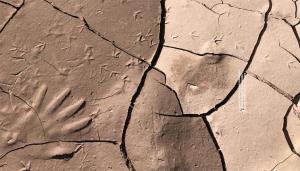
LLNL scientists and collaborators used fingerprinting — separating the relative roles of natural and human influences on global climate — to identify how greenhouse gas and particulate pollution emissions drive regional drying around the globe.
Pointing a finger at global drying
Human-caused climate change has “intensified” patterns of extreme rainfall and drought across the globe, according to a new study by Lawrence Livermore scientists.
There is a detectable “human fingerprint” on decreasing rainfall over the U.S., Central Asia and Southern Africa, according to the results. It also is detectable on increasing rainfall in the Sahel region of Africa, India and the Caribbean.
In addition to increasing greenhouse gas emissions, aerosols released by human pollution and large volcanic eruptions also have been “major contributing agents” to global drought patterns through the industrial era, the research says.
Droughts are among the most expensive weather-related disasters in the world, affecting ecosystems, agriculture and human society.
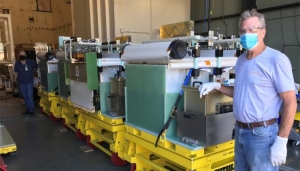
LLNL engineer Rick Anaya (left) works with NNSS engineer Don Max to finalize preparations to ship four pulsed power modules to Nevada. The modules are key elements of a diagnostic that will provide a novel neutron diagnosis of plutonium while being dynamically compressed by high explosives.
Pulsed power jolts innovation
Lawrence Livermore National Laboratory (LLNL) researchers delivered four pulsed power modules to Nevada National Security Site (NNSS) this month, making excellent time despite many challenges presented by COVID-19.
The modules are key elements in a novel diagnostic capability jointly developed by Los Alamos National Laboratory, NNSS and LLNL to be deployed in the U1A underground experimental laboratory at NNSS. The new diagnostic capability — dubbed Neutron Diagnosed Subcritical Experiment (NDSE) — will leverage innovations from the three sites to get never-before-seen data crucial to stockpile stewardship.
“Subcritical” experiments like this consist of exploring the behavior of plutonium when it is subjected to a high explosives drive, but without it ever reaching the point where the fissile assembly reaches criticality. Researchers have decades of experience designing subcritical experiments, but existing diagnostic tools have not allowed measurements of the exact reactivity in this dynamic environment. The uncertainties involved with inferring reactivity using the existing suite of diagnostics have long kept researchers from validating certain aspects of numerical models used in assessing stockpile safety, security and effectiveness.
Unlike diagnostics used on subcritical experiments to date, the experiment will be used to take direct measurements of an assembly’s reactivity.

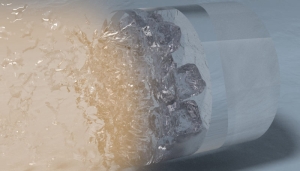
High-power lasers focus on the surface of a diamond, generating a sequence of shock waves that propagate throughout the sample (from left), simultaneously compressing and heating the initially liquid water sample, forcing it to freeze into the superionic water ice phase. Image: Millot, Coppari, Hamel, Krauss/LLNL.
As cold as ice
A better understanding of the material processes inside the icy giant planets Uranus and Neptune can help us understand the most common type of exoplanet.
Experiments published in 2018 revealed that “icy” is much more complicated for ice giants than previously thought. “We found this unusual superionic state for water that exists only at high pressures and temperatures that are similar to what we expect inside Neptune and Uranus,” said Marius Millot, a physicist at Lawrence Livermore National Laboratory. “Superionic ice is a new state of matter.”
Millot led the team of researchers who discovered this previously unknown state of matter. They used first a diamond anvil cell and then Rochester University’s Omega Laser Facility to force the water to crystallise into this new state.
“For water, [superionic ice] is a state where the oxygen atoms that form the H2O molecule that we’re familiar with continue to form a solid lattice, like in ice that we know,” Millot said. “But unlike the ice we know that is in our ice cubes, in superionic ice the hydrogen is actually free to move around within this lattice of oxygen. Basically, the hydrogen atoms are moving around almost like a fluid within the solid crystal made of the oxygen. It’s a very unusual solid–liquid state.”





